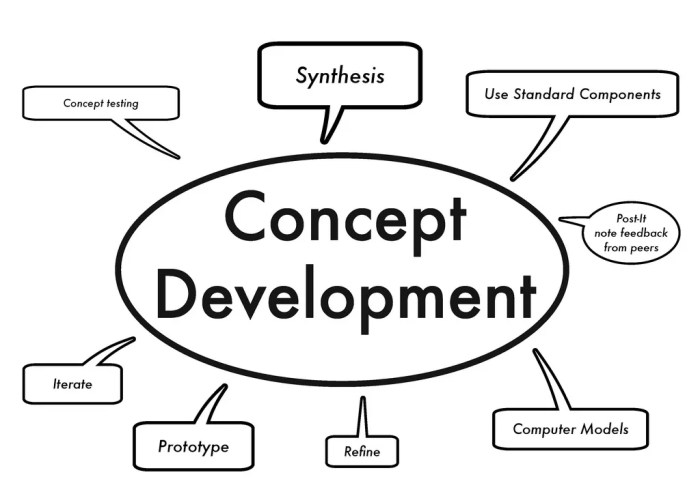Concept development practice page 4-1 is an integral part of the software development lifecycle, providing a structured framework for capturing and refining project concepts. By fostering collaboration and ensuring clear communication, this practice empowers teams to develop high-quality software products that meet user needs.
The page serves as a central repository for documenting project goals, requirements, and design ideas. It facilitates discussions, feedback, and revisions, ensuring that all stakeholders are aligned on the project vision.
1. Definition of Concept Development Practice Page 4-1
Concept development practice page 4-1 is a systematic approach used in software development to define and refine the key concepts and functionalities of a software system.
It serves as a structured document that captures the essential elements of a software concept, including its purpose, scope, boundaries, and relationships with other concepts within the system.
This practice is commonly employed in the early stages of software development, typically during the requirements gathering and analysis phase, to establish a shared understanding among stakeholders and ensure that the software meets the intended business needs.
2. Key Elements of Concept Development Practice Page 4-1
A concept development practice page 4-1 typically includes the following key elements:
- Concept Name:A clear and concise name that identifies the concept being defined.
- Concept Description:A detailed explanation of the purpose, scope, and functionality of the concept.
- Concept Attributes:A list of the key attributes or properties associated with the concept.
- Concept Relationships:A description of the relationships between the concept and other concepts within the system.
- Concept Constraints:Any limitations or restrictions that apply to the concept.
- Concept Examples:Real-world examples or use cases that illustrate the application of the concept.
3. Benefits of Using Concept Development Practice Page 4-1

Incorporating concept development practice page 4-1 into software development processes offers several benefits:
- Improved Communication:By providing a shared and structured document, it facilitates clear communication and understanding among stakeholders, reducing the risk of misunderstandings and misinterpretations.
- Enhanced Collaboration:It fosters collaboration between developers, analysts, and business users, ensuring that the software aligns with the intended business requirements.
- Increased Quality:By defining and refining concepts early on, it helps identify and address potential issues or inconsistencies, leading to improved software quality and reduced rework.
- Reduced Development Time:By establishing a clear understanding of the concepts involved, it can streamline the development process and reduce overall development time.
- Increased Maintainability:A well-defined concept development practice page 4-1 serves as a valuable reference for future maintenance and enhancements, making it easier to understand and update the software system.
4. Challenges and Considerations: Concept Development Practice Page 4-1
While concept development practice page 4-1 is a valuable practice, it is important to be aware of potential challenges and considerations:
- Time and Effort:Creating and maintaining a concept development practice page 4-1 can require significant time and effort, especially for complex software systems.
- Stakeholder Involvement:Ensuring active participation and input from all relevant stakeholders is crucial to ensure that the concept development practice page 4-1 accurately reflects the intended system.
- Evolution and Changes:As software requirements evolve, the concept development practice page 4-1 may need to be updated and revised accordingly, requiring ongoing maintenance and management.
5. Best Practices and Recommendations

To effectively use concept development practice page 4-1, it is recommended to follow these best practices:
- Involve Key Stakeholders:Ensure that all relevant stakeholders, including developers, analysts, and business users, are involved in the concept development process.
- Use Clear and Concise Language:Write the concept development practice page 4-1 using clear and concise language that is easily understood by all stakeholders.
- Provide Examples and Illustrations:Use real-world examples and illustrations to make the concepts more relatable and easier to understand.
- Review and Iterate:Regularly review and iterate on the concept development practice page 4-1 as the software requirements evolve.
- Use Tools and Templates:Leverage tools and templates to streamline the concept development process and ensure consistency.
6. Case Studies and Examples

| Project | Challenges | Benefits |
|---|---|---|
| E-commerce Platform | Complex business logic and multiple stakeholders | Improved communication and reduced development time |
| Mobile Application | Integration with existing systems and user experience design | Enhanced collaboration and increased software quality |
| Data Analytics System | Large datasets and complex algorithms | Reduced rework and increased maintainability |
Essential Questionnaire
What is the purpose of concept development practice page 4-1?
Concept development practice page 4-1 provides a structured framework for capturing and refining project concepts, ensuring clear communication and collaboration among stakeholders.
What are the key elements of concept development practice page 4-1?
Key elements include project goals, requirements, design ideas, discussions, feedback, and revisions, all documented in a central repository.
How does concept development practice page 4-1 improve software development?
It enhances collaboration, improves communication, fosters a shared understanding of project objectives, and ultimately leads to higher quality software products.